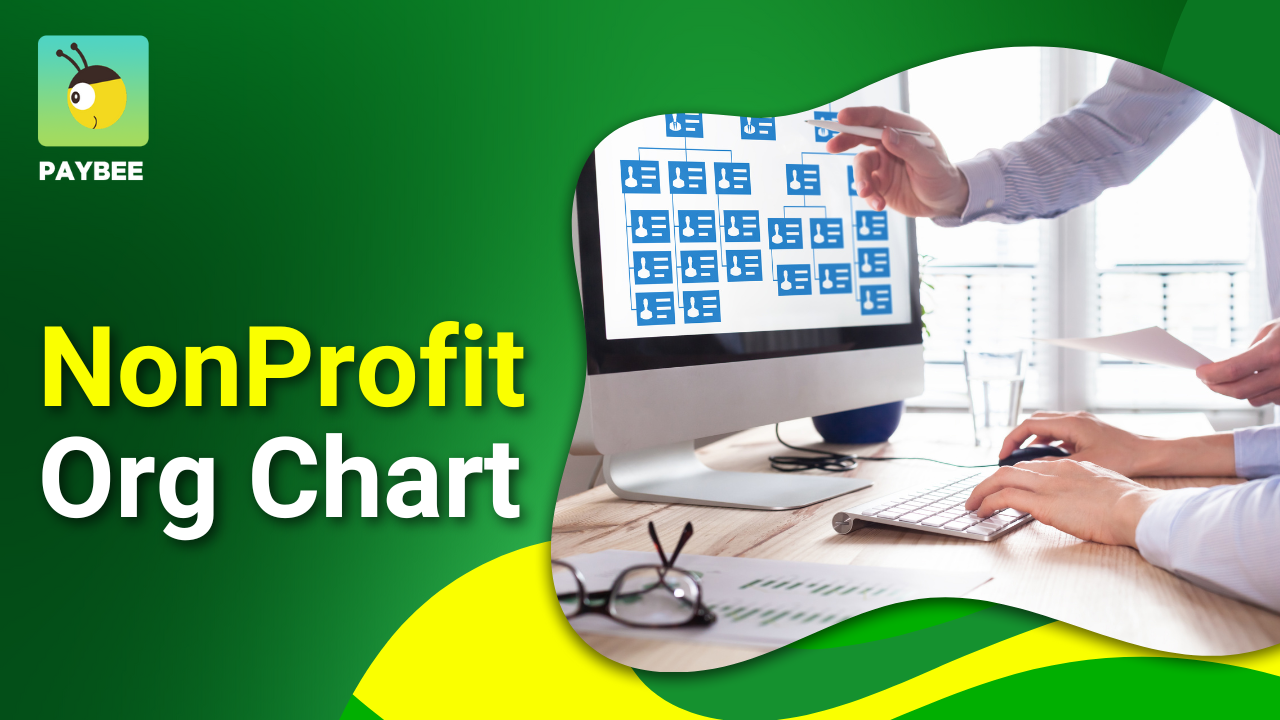
Your Nonprofit Org Chart - Creating Your Own Structure for Success
Your Nonprofit Org Chart - Creating Your Own Structure for Success
You nonprofit organizational chart is like a who is who directory so everyone knows who is in charge of what. Just imagine a big organization tripping over itself because nobody knows who reports to whom. As your charity gets larger and more successful, so does the amount of employees and volunteers. And after a certain point, things can get so big that people don’t even see people from other departments.
Reasons you need an org chart today:
- Clarifies who’s responsible for what, so tasks don’t fall through the cracks.
- Boosts efficiency by streamlining communication and decisions.
- Builds donor trust by showing a professional, transparent setup.
- Scales with your nonprofit, whether you’re small or global.
- Simplifies onboarding for new staff or volunteers.
Why does this matter now? Nonprofits face more scrutiny than ever, donors and boards expect transparency and efficiency. A solid org chart helps you show up prepared, streamline decisions, and prove you’ve got your act together. This is why these charts can be so useful. They’re a simple diagram that maps out your team’s hierarchy, roles, and who answers to who while cutting confusion and building trust with donors who want to know their money’s in good hands.
What are Organizational Charts for Nonprofits and Their Benefits?
These charts are a clear visual map showing who’s who in your organization. Think board members at the top, executive director in the middle, and staff or volunteers below, all formatted for quick reference. It lays out the charity’s hierarchy, everyone’s roles and lays out who reports to whom so everyone knows where they stand within the overall operation.
So, what’s in a nonprofit org chart? It typically includes:
- Board of directors: Sets the vision and oversees strategy.
- Executive director: Runs daily operations and reports to the board.
- Staff: Handles programs, fundraising, or marketing.
- Volunteers: Supports events or outreach, often at the base.
Charts vary by size since smaller nonprofits usually have a simple setup with a handful of roles, while larger ones include departments like development or advocacy as well as a host of others the more complex the organization. The key? Align the chart with your own mission. A health nonprofit might prioritize medical staff roles, while an arts group would focus on program coordinators.
But why bother with an organization chart? Although it may just look like a pretty diagram, it actually solves real world problems. First, it clears up communication. No more “I thought you were handling the donor calls!” A clear chart shows who’s responsible for each critical mission, and who is the lead or supervisor if there should be a problem. It’s you streamlined governance structure for your nonprofit organization in an easy to understand format.
Key Benefits of a Nonprofit Org Chart
- Clarity: Eliminates confusion over who does what.
- Accountability: Ensures everyone knows their responsibilities.
- Efficiency: Speeds up communication and decisions.
- Trust: Shows donors a transparent and organized structure.
- Scalability: Easier to grow your team and restructure when needed.
It also speeds up decisions. With clearly defined roles you don’t waste time figuring out who approves what, the chart visually shows the chain of command. Donors love it too. A transparent structure shows you take your charity seriously and this helps boost their confidence.
This alignment keeps everyone pulling in the same direction.
Understanding Nonprofit Organizational Structure
A nonprofit’s organizational structure is the foundation of individuals that support how your organization runs, makes decisions, and moves toward its mission.
At the top sits the Board of Directors who are responsible for governance and long term strategic vision. Below them sites the Executive Director (or CEO) who leads the day-to-day operations and makes sure everything flows smoothly across departments.
Depending on the size of your charity, you may have several Key departments like finance, programs, and communications and focus on different areas of your organization’s work. These teams are supported by staff and volunteers who should also be included in your chart so everyone’s roles and responsibilities are clear if problems should ever arise. You might also have committees or task forces that tackle special projects or areas like fundraising or event planning.
The thing is, you’ll need to have a well thought out list of all the important members of your origination on hand when planning out your own chart. How detailed you want or need it to be is entirely up to you and your organization’s needs. Just remember, you want this chart to be cleared, so don’t clutter it up with too many details!
Expert Insight
It’s also smart to create a chart that shows your nonprofit succession planning so if someone leaves, each department will already have a back up individual to contact so your charity can continue operating without any problems.
Nonprofit vs. For-Profit Structures
Nonprofits and for-profits differ significantly in their purpose, funding, and governance. Nonprofits focus on social or community impact and are funded primarily through donations and grants. This financial assistance always stays within the organization and is never distributed to members as payment. If for some reason a nonprofit does make a ‘profit,’ it’s immediately reinvested into their mission. Even if the charity fails and needs to be liquidated, all equity needs to go to another charitable cause and can not be sold off for the members benefit.
In contrast, for-profits aim to generate revenue for owners or shareholders through market driven sales of goods or services. There is often limited social or community impact, and all assets are bought and sold usually for the sole purpose of generating more wealth for shareholders. This means for-profits focus entirely on financial returns. These distinctions shape how each type of organization operates and achieves its objectives.
5 Types of Nonprofit Organizational Charts You Need to Know About
While there are many theoretical org chart types, not all are practical for nonprofits. Below are the five most useful and realistic org chart types for nonprofit organizations, based on their mission driven focus, budget constraints, and typical staffing structures.
Traditional Hierarchical Chart
Best for: Mid to large nonprofits with multiple departments or clear reporting lines.
This is the most widely used and practical nonprofit structure:
- Board of Directors at the top
- Executive Director below the board
- Department heads (e.g., Finance, Programs, Fundraising)
- Staff and volunteers under each department
Why it works:
It offers clarity, accountability, and smooth decision making. Everyone knows who they report to and how their role contributes to the mission.
Functional Chart
Best for: Small to mid sized nonprofits with specialized departments.
In this structure your people are grouped by function:
- Teams like Development, Programs, Marketing, and Operations work independently but report to the Executive Director.
Why it works:
It promotes efficiency and allows workers to specialize. It’s also easier to scale as your nonprofit grows.
Divisional Chart
Best for: Large nonprofits with multiple programs, locations, or target audiences.
Here, the organization is divided by:
- Geography (e.g., East, West regions)
- Service lines (e.g., Youth Programs, Food Relief, Education)
- Each division has its own team and leadership
Why it works:
It allows autonomy within programs or regions while staying aligned with the larger mission.
Matrix Chart
Best for: Nonprofits with overlapping projects and shared resources.
In a matrix, team members report to both:
- A department lead (like a communications director)
- And a project/program lead (like a campaign or event manager)
Why it works:
It encourages collaboration and flexibility, which is essential when people wear multiple hats. However, it does require strong communication to avoid confusion.
Flat (Collaborative) Chart
Best for: Small or grassroots nonprofits with a tight-knit, team-based approach.
- Few or no middle managers
- Everyone is closely involved in decision-making
- Individuals may report directly to the Executive Director or even the Board
Why it works:
It fosters equality and teamwork.Ideal for early stage nonprofits where titles matter less than action.
Stick to one of the five above and adapt it to your current size, needs and goals. A good nonprofit organizational chart should reflect how your team actually operates and not just the way you wish it did.
Why Nonprofits Needs an Org Chart
- Clarity of Roles – No more confusion about who’s in charge of what.
- Better Communication – Everyone knows where to direct questions, decisions, or ideas.
- Stronger Accountability – Clear lines of responsibility make performance easier to track.
- Easier Onboarding – New team members see the big picture right away.
- Smarter Planning – Helps identify gaps, overlaps, and future staffing needs.
Creating a Chart Reflecting Your Nonprofit Organizational Structure
A nonprofit organizational chart is a visual representation of the organization’s structure, outlining roles, responsibilities, and reporting relationships. It serves as a roadmap for governance, operations, administration and accountability and demonstrates clarity for paid workers, volunteers, board members, donors, and other stakeholders. Below is a detailed guide to creating an effective nonprofit org chart, including key elements, their importance, and step by step instructions to build one tailored to your organization’s needs.
Here’s Your Step-by-Step Guide
Steps to Build a Nonprofit Organization Chart
Creating an effective org chart requires careful planning and stakeholder input. Follow these detailed steps to build one that reflects your nonprofit’s unique needs and supports its mission.
Step 1: Identify Key Roles and Responsibilities
Action: Create a comprehensive list of all the roles within your organization, from the board to volunteers. Include:
Leadership: Board members, executive director, senior management (e.g., CFO, Development Director).
Operational Roles: Program staff, support staff, and volunteer coordinators.
Unique Roles: Any specialized positions specific to your mission that you feel are important to include.
How to Do It:
Review your mission statement and strategic plan to identify the necessary roles that are important in achieving your goals. Be sure to document both paid and volunteer positions while noting who is part time or contract roles. For each the roles outline their key responsibilities (e.g., “Program Director: Oversees service delivery, manages program staff, tracks outcomes”).
Why It Matters: This step ensures no role is overlooked and aligns the structure with your nonprofit’s mission and operational needs.
Example: A youth education nonprofit might list roles like Board Chair, Executive Director, Program Director (for tutoring programs), Volunteer Coordinator, and Administrative Assistant.
Step 2: Choose a Structure
Action: Select a structure that fits your nonprofit’s size, mission, and complexity. Common structures include:
Hierarchical: Traditional top-down structure with clear reporting lines (e.g., board → executive director → staff). Best for larger nonprofits.
Functional: Organized by department (e.g., programs, fundraising, finance). Ideal for nonprofits with specialized functions.
Flat: Minimal hierarchy with fewer management layers. Suited for small nonprofits with collaborative teams.
Divisional: Separate teams for different programs or geographic regions. Useful for large, multi-program nonprofits.
Matrix: Staff report to multiple supervisors (e.g., program and functional managers). Best for complex, project-based nonprofits.
How to Do It:
Assess your nonprofit’s size to find its optimal chart. For example, small nonprofits may prefer flat structures while larger ones may need hierarchical or divisional charts to entirely document their staff. You should also consider your mission’s complexity, a single focus nonprofit may use a functional structure while a global multi-service one may need divisional representations.
Why It Matters: The structure impacts communication, decision making and scalability. So always be sure your organization chart demonstrates your operational flow.
Example: A small community health nonprofit might choose a flat structure with an executive director overseeing a small team of program and support staff. Yet a national disaster relief nonprofit might use a divisional structure to make regional operations more transparent.
Step 3: Define Reporting Relationships
Action: Establish who reports to whom by creating clear lines of authority and accountability.
How to Do It:
Map out direct reporting lines like how the Program Director reports to the Executive Director. Or how volunteers report to your Volunteer Coordinator. Clarify oversight roles as well. For example, show how the board oversees the executive director but not staff directly. And try to identify collaborative relationships like how your Development Director works with the Program Director on grant proposals.
If you decide to use a matrix structure, specify dual reporting lines like a program coordinator reporting to both a Program Director and a Regional Manager.
Why It Matters: Clear reporting lines prevent confusion, reduce conflicts, and help ensure efficient decision making.
Example: In a hierarchical structure, the CFO and Program Director report to the Executive Director, who reports to the Board Chair.
Step 4: Gather Input from Stakeholders
Action: You should work to include as many members of your team for their insights and input. People like your board members, executive leadership, department heads, and even volunteers can help make sure all of the information you’ve gathered is clear and without mistakes. This is especially true for your reporting lines which may not always be clear to you or others.
How to Do It:
Hold a meeting or send a survey to gather feedback on the draft structure. Ask specific questions, Are roles clearly defined? Do reporting lines reflect actual workflows? Are any critical roles missing?
For unique roles or collaborative workflows you can discuss how they fit. For instance how a volunteer heavy nonprofit may need a dedicated volunteer coordinator.
Why It Matters: Stakeholder input makes sure you chart is fully accurate, inclusive, and reflective of the real world operations your organization is taking rather than just assuming or even guessing.
Example: A board member might suggest adding a Fundraising Committee to the chart, while a program manager might highlight the need for a data analyst role to track outcomes.
Step 5: Use an Organization Charting Tool or Software
Action: Luckily there are a few tools out there to make all of this as pain free as possible. And better yet, the ones we’ll mention are all free. Plus they’ll create professional looking charts that you can brand and be proud to hand out to colleagues and donors alike.
How to Do It:
Choose a tool based on your specific needs and the comfort:
- Canva: A free tool offering user friendly customizable templates for charts.
- Lucidchart: Offers advanced features and AI Assistance for complex structures.
- SmartDraw: Integrates with HR systems for automated updates.
- HRIS Platforms: Useful for nonprofits with integrated HR systems to sync employee data.
- Microsoft Office/Google Sheets: Simple options for basic charts.
Why It Matters: A professional and easy to read chart gives everyone the ability to see exactly who is doing what, what they’re responsible for and who to speak to if there’s a problem.
Example: Use Canva to create a hierarchical chart with the board at the top, the executive director below, and branches for programs, fundraising, and operations.
Step 6: Review and Update Regularly
Action: For beeter or worse, things are changing constantly, this includes your staff and volunteers. So assign someone with the task of updating your chart every three to six months depending your turn over rate to keep everything up to date and accurate.
How to Do It:
Distribute the draft to board members, leadership, and team leads for review. Ask for feedback on clarity, accuracy, and any missing elements. Set a schedule and assign someone to do updates to keep everything accurate and timely.
Why It Matters: Regular updates keep your chart relevant.
Example: After hiring a new Communications Director, update the chart to include their role and adjust reporting lines as needed.
Tips for Success
- Tailor to Your Nonprofit’s Size: Small nonprofits (e.g., 5-10 staff) may combine roles, while larger ones need detailed department specific charts.
- Align with Mission: Make sure the structure prioritizes roles that directly support your mission.
- Incorporate Volunteers: If volunteers are critical, include them prominently with clear oversight (e.g., a Volunteer Coordinator role).
- Keep It Simple: Avoid overly complex charts that confuse stakeholders; focus on clarity and usability.
- Communicate Changes: Share updates to the org chart with all staff and volunteers to maintain transparency.
Sample Nonprofit Organizational Structure Chart (Text Description)
For a medium sized nonprofit (e.g., a community health organization with 20 staff):
- Board of Directors: Chair, Vice Chair, Treasurer, Secretary, 5 additional members.
- Executive Director: Reports to the board, oversees all operations.
- Senior Leadership:
- Program Director (reports to Executive Director): Manages health education and outreach programs.
- Development Director (reports to Executive Director): Oversees fundraising and donor relations.
- CFO (reports to Executive Director): Handles financial planning and reporting.
- Program Staff: Health Educators (3), Outreach Coordinators (2), report to Program Director.
- Support Staff: Administrative Assistant, IT Specialist, report to CFO.
- Volunteers: 10 volunteers, report to Volunteer Coordinator (under Program Director).
Steps to Create a Nonprofit Org Chart
Additional Resources
- Templates: Canva and Lucidchart offer free nonprofit organizational chart templates.
- HRIS Tools: Platforms like Paybee can integrate your charts with employee data for larger nonprofits.
- Guides: Check resources from the Nonprofit Leadership Alliance or BoardSource for governance and structure best practices.
Frequently Asked Questions
What does a nonprofit org chart include?
It typically includes the board of directors, executive director, staff roles, and volunteer positions.
How does a nonprofit org chart benefit organizations?
It improves communication, clarifies roles, and boosts transparency for stakeholders.
How can nonprofits create an effective org chart?
Use tools like Canva, involve stakeholders, and ensure the chart is clear and scalable.
Wrapping Up
Your organization chart may not seem like a big deal, that is until you need to quickly reference who is running volunteer management, or who to contact for IT support. Your chart is a visual directory of all the important people in your charity clearly laid out so you can access information fast. This not only helps people in positions of authority, but also helps lower level individuals to understand the chain of command within your nonprofit. And the less complex you decide to make your chart, the less mistakes and confusion there will be.
Start Fundraising






